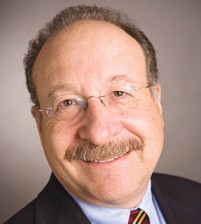For region’s corporate data users, it’s worth watching telecom mergers

Henry Dubroff
The merger wave that has splashed over mid-sized public companies and their operations in the region continues to wash up on Central Coast beaches.
The latest is the combination of two Colorado-based telecom companies, Level 3 Communications of Broomfield and Littleton-based TW Telecom.
Under a deal announced June 16, Level 3 — which operates a worldwide network of fiber-optic cables and data delivery systems — will buy TW Telecom, whose telecom network provides services to most large cities in the U.S.
When the dust settles on the $7.3 billion cash-and-stock transaction, TW Telecom shareholders will own slightly less than 30 percent of Level 3. The tax-free deal is likely to pass muster with shareholders, especially given that STT Crossing, a unit of Singapore Technologies Telemedia, which owns about 23 percent of Level 3, has agreed to vote in favor of the deal. If regulatory approvals go as planned, the deal will close by year-end.
For the Tri-Counties the stakes are not insignificant. That’s because one of the “metropolitan” fiber-optic loops operated by TW Telecom runs right through the Central Coast.
My information suggests the TW Telecom folks, who maintain a sales office in Santa Barbara, have been pretty effective in developing large corporate clients, particularly health-care companies that need ultra-fast and ultra-secure data services. The folks at financial news blog Motley Fool point out that TW Telecom’s signature service is fiber-optic cable that connects directly to buildings, solving a big part of the “last mile” problem that plagues legacy providers.
In combination with Level 3, TW Telecom customers will gain access to the worldwide fiber network of undersea cables formerly owned by Global Crossing. The combined company, with $7.9 billion in annual revenue and around $2 billion of profits before interest, depreciation and taxes, will be better positioned to compete against corporate behemoths such as Comcast and Google.
And this is an industry that’s going to be dominated by the behemoths in the future. Comcast is poised to take over all but the Cox systems in south Santa Barbara County, assuming its three-way transaction with Time Warner cable and Charter Communications passes muster with regulators.
Verizon and AT&T already are competing heavily in the Central Coast marketplace, where they operate the legacy phone systems of GTE and PacBell, respectively, and compete head-to-head for wireless services.
“We believe this is a financially compelling and very strategic acquisition for Level 3,” said the Broomfield company’s president and CEO, Jeff Storey.
What’s also driving this and other transactions are unusually low interest rates. Level 3 said at the time of the merger announcement that it had locked up $3 billion in acquisition financing. Some of the acquisition costs will be paid down as the two Colorado companies cut $240 million a year in overhead, thanks to “synergies.”
Rating agency Fitch was quick to affirm Level 3’s credit rating of single B-plus, and said the merger could increase “the company’s overall competitive position and ability to capture incremental market share.”
For TW Telecom, it will mean the departure of Chairman and CEO Larissa Herda.
While the usual class-action law firm suspects have shown up to grouse about the merger price, the $40.86 per share offer represents a premium to the Littleton company’s recent selling price. And TW Telecom was going to face big pressure on profit margins as it faces increasingly stiff competition from larger rivals.
Depending on how you look at it, Level 3 is an old-line company or a relative newcomer to the telecom game. It started out as a unit of construction giant Kiewit Corp. of Omaha, Nebraska, which dates back to 1884, but was spun off as a way for the Kiewit to take advantage of the coming digital revolution, moving to the northern Denver suburbs in advance of a 1998 initial public offering. TW Telecom is located about 26 miles out of the Mile High City’s southern suburbs, not far from the headquarters of cable magnate John Malone’s Liberty Media.
A huge capital cushion helped Level 3 survive the severe industry shakeout after the dot-com collapse. In 2011 it took a huge step forward when it agreed to buy New York-based Global Crossing, gaining its worldwide network of undersea cables and fiber-optic systems.
The bottom line is that the Central Coast doesn’t have the skyscrapers and density of a major metro area. But it does have corporate users such as Amgen, Cottage Health System, Dignity Health, Lynda.com, Teledyne Technologies and Raytheon Corp. that demand a lot of capacity to move data. And that’s why this latest merger in the fast-moving telecom business is worth following.
• Contact Henry Dubroff at [email protected].
[CORRECTION: A previous version of this column identified the headquarters location for Global Crossing. Also, TW Telecom CEO Larissa Herda is not Latina.]










